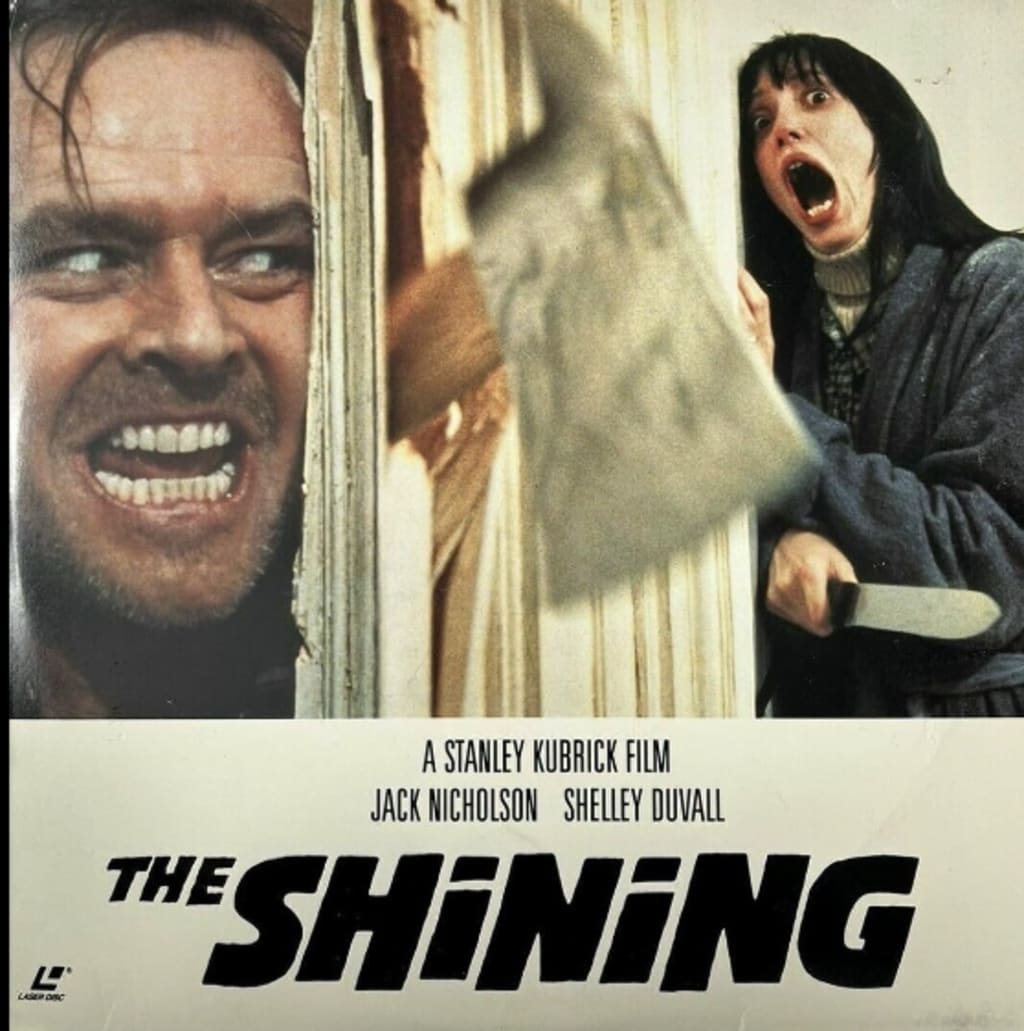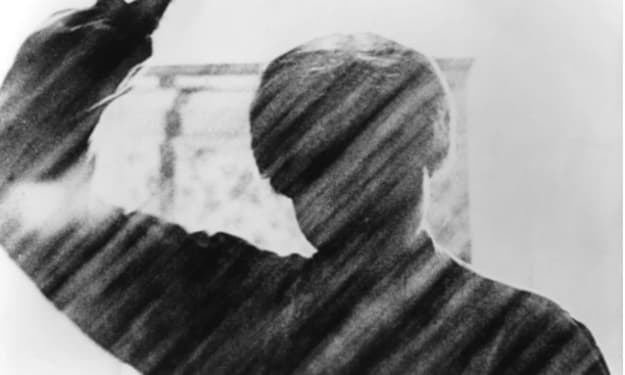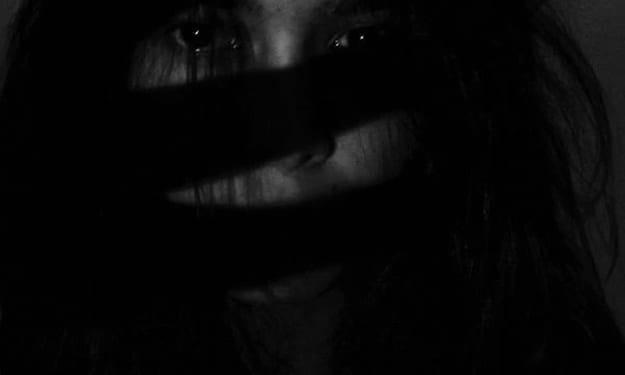Alone in the Dark: Exploring Isolation in Classic Horror Films
Here are 10 movies that deal with feelings and realities of isolation.

1. Nosferatu (1922)
Swiped from Bram Stoker's original Dracula idea, F. W. Murnau's "Nosferatu" has become a classic vampire tale in its own right.
Instead of Jonathan Harker, this story gives us Thomas Hutter (Gustav von Wangenheim), who also sets out to a Transylvanian castle for a real estate deal. Only this time it's not to meet Count Dracula but Count Orlok (Max Schreck). But a vampire by any other name is still a vampire, right?
Count Orlok really conveys the alien sense of a vampire and how isolated it is from the rest of nature. It never feels like someone is chased by a killer, but rather than the vampiric killer rolls into town like some mysterious, inevitable fog. Hutter himself sees the creature for what it is but seems too paralyzed by fear to stop it.
The viewer also has no true explanation for Orlok's nature or the origins of the creature. Was he once human, guilty of taking the elixir of life to prolong his own life, having it regenerate his body, but at the expense of transformation into a creature that is sensitive to sunlight and must feed on human blood? In any case, Orlok never apologizes to the townsfolk for the pain he has caused and the events we see in "Nosferatu." Long story short, he is a jerk.
2. Night of the Living Dead (1968)
George A. Romero's "Night of the Living Dead begins with a car trip to a small town cemetery. Barbra (Judith O'Dea) and her brother Johnny (Russell Streiner) are arriving at a cemetery when, much to their shock, they get accosted by an unknown, ghoulish-looking man (Bill Hinzman). Johnny gets knocked out, presumably left for dead, and Barbra just barely escapes the attacker, finding her way to an isolated farmhouse.
She is not alone there forever, as she meets fellow humans Ben (Duane Jones), a young couple named Tom (Keith Wayne) and Judy (Judith Ridley), and the Cooper family — Harry (Karl Hardman), Helen (Marilyn Eastman), and their ghoul-bitten daughter, Karen (Kyra Schon). In little time at all, Ben and Harry begin vying for dominance over decision-making as the living dead crisis unfolds. Of course, in such a situation, one might ultimately resort to violence in order to regain control. Right?
It's really difficult to overstate how significant "Night of the Living Dead is, as it basically spawned the modern zombie, and certainly innovated regarding "apocalyptic" storytelling. Would you survive until the next day, either in a car crash or on a farm gradually being swarmed by the living dead? Though "Night of the Living Dead" is relatively slow and brooding, it avoids being boring.
Another great thing about the modern zombies (as depicted here) is that they cannot be negotiated with and tend to gang up on targets to take them down, like wild animals, only human-like. As they grow in number, they act more like a hivemind, which would potentially be enough to overtake any government.
In some of Romero's followups, humans try to downplay the threat even more, such as in "Land of the Dead," where they stand in for entertainment with zombie fighting, Michael Vick-style (or maybe like Vince McMahon, Don King, and a slew of others). However, this early installment is not so much an elaborate social commentary, but a basic statement about human nature. It's really about how spontaneous groups of people (part of the general population) might deal with a developing world crisis.
Also, the "sins" here are almost more organizational than individual, because no one is able to successfully communicate their ideas and convince others into a successful survival strategy. In fact, because there is no immediate human enemy, they have every incentive to put differences aside. That being said, from a certain perspective, the ghouls might also be seen as stand-ins for any group that has been shamed and "othered" over time, be it a minority group, drug users, prostitutes, illegal aliens, or any group unfairly maligned as uniquely violent or "aliens" to the norm.
3. The Baby (1973)
In Ted Post's "The Baby," a social worker named Ann Gentry (Anjanette Comer) finds an unusual case in the Wadsworth family. Their "child,"known only as "Baby," is actually a fully grown man, but they insist he actually never advanced intellectually beyond the capacity of an infant. Harmony is in turmoil for them as Ann starts to challenge their narrative,
Also, even though they are not blessed with great wealth, the Wadsworths do get disability money due to Baby's condition. To them, losing him as a meal ticket could mean losing their jobs as caretakers, and home. However, once the family is no longer away from prying eyes, it starts to seem as if the Wadsworths are seriously mentally ill.
They insist that Baby's condition is genuine and that Ann is only making false accusations. Still, it seems like no accident that the Wadsworths are so defensive, acting far more like they are blessed than cursed over Baby's state. Of course, in their defense, these characters might always say they're just making the best of a bad situation.
However, could be that Mrs. Wadsworth (Ruth Roman) and her daughters (Marianna Hill, Suzanne Zenor) are scam artists, and worse? This is an interesting story, even if not a deeply moving one, and the interesting premise and characters bring the tale to a moving conclusion.
4. Carrie (1976)
Brian De Palma's "Carrie offers several different forms of isolation, including being overly sheltered by an abusively overzealous parent and also bullied by one's peers. It begins with high schooler Carrie White (Sissy Spacek) going home crying to her mother, Margaret (Piper Laurie), after humiliation at school. What's the problem? Well, Margaret never properly informed Carrie about menstruation, so when Carrie first experienced one in gym class, she was ruthlessly bullied over her panic and confusion.
So that's one form of humiliation for poor Carrie. The other is Margaret, a virulently anti-woman (and presumably anti-abortion) fanatic who blames Carrie, and womanhood overall, for her misfortunes. Angry at her daughter for perceived impurity, Margaret attacks her and, at one point in the story, locks her in a freaky "prayer closet" to pray for forgiveness. So yes, as if she's a dog, Margaret locks her inside the house if she does not behave, and her supposed misbehavior is just experiencing some basic facts of life.
On top of all that, Carrie has telekinetic powers (and if you don't know what those are, it's when you have the ability to move objects with your mind). So the horror of "Carrie" isn't just that anyone gets brutally murdered (though it's not like Carrie is unable to do so with her powers). It's really also just the near-constant bullying and undermining that Carrie goes through on a near-constant basis.
5. The Elephant Man (1980)
"The Elephant Man," directed by David Lynch, is a film that explores the life of Joseph Merrick (John Merrick in the film, played by John Hurt), a man with severe physical deformities. The movie portrays how society isolates Merrick due to his appearance, and his struggles to connect with others.
Throughout the movie, Merrick is physically isolated from others. He is kept in a small room in the hospital and
is often confined to a bed. This isolation is used to emphasize Merrick's alienation from society and the difficulty he has in forming connections with others.
Emotional Isolation: Merrick's appearance is so different from the norm that he finds it difficult to connect with others on an emotional level. This is illustrated when he meets with the actress Mrs. Kendal (Anne Bancroft). She befriends him, but so many others are ultimately unable to see him as anything other than a freak. Merrick does have the ability to form emotional connections with others, but his need for isolation from a misunderstood world is difficult to overcome.
Social isolation: The film also highlights the social isolation that Merrick experiences. Society views him as a curiosity rather than a human being, and this alienation is exacerbated by the physical and emotional isolation he experiences. People stare at him in the streets, and he is unable to participate in everyday activities.
Isolation through exploitation: Merrick is also isolated through exploitation. He is put on display for others to gawk at and is used as a means of making money. The film shows how this exploitation is not only emotionally damaging for Merrick but also reinforces his isolation from society.
"The Elephant Man" uses Merrick's story to explore the various ways in which society isolates those who are different. The film highlights the emotional, physical, and social isolation that Merrick experiences and shows how this isolation is ultimately damaging to his well-being.
6. The Shining (1980)
Isolation is a central theme in the movie "The Shining," directed by Stanley Kubrick. “The Shining” is based on Stephen King's novel of the same name and is renowned for its psychological horror elements. In "The Shining," isolation serves as a powerful psychological tool that contributes to the sense of dread and unease throughout the story. The film is primarily set in the remote and isolated Overlook Hotel, which is closed for the winter season due to heavy snowfall, leaving the main characters stranded and cut off from the outside world.
This isolation has several significant effects on the characters.
Cabin fever and psychological strain: The isolation and confinement of the hotel, coupled with the extreme weather conditions, lead to cabin fever a feeling of restlessness and irritability due to prolonged isolation. As the characters spend more time isolated, their mental states begin to deteriorate. Jack Torrance (Jack Nicholson), essentially the main character, succumbs to the hotel's supernatural influences and his own inner demons, eventually descending into madness.
Breakdown of family bonds: Isolation exacerbates tensions within the Torrance family, which get tied in with the "ghosts." Jack's increasing isolation and descent into madness strain his relationships with his wife Wendy (Shelley Duvall) and son Danny (Danny Lloyd). The family members in “The Shining” are left to cope with their own fears and insecurities, and the lack of outside communication prevents them from seeking help or support and almost seems symptomatic of their gradually fraying familial bonds.
Lack of external reality: The isolation in the hotel blurs the line between reality and hallucination for the characters, and the untethered Jack seems to fantasize about a new life, and a new everything, and to just become part of some unspecified grandness (which makes him perfect for the haunted Overlook). The characters become increasingly unsure of what is real and what is a product of their own minds, adding to the psychological horror of the story.
Symbolism: The isolation of the hotel can be seen as a reflection of the characters' internal isolation. Jack's struggles with his writing and his past failures contribute to his sense of isolation and vulnerability, which the hotel exploits. The isolation also serves as a metaphor for the loneliness and alienation that can come from being trapped in one's own mind. Kubrick masterfully uses the setting and isolation to create a sense of unease, tension, and psychological horror.
The vast, empty spaces of the hotel and the isolation of the characters contribute to the film's eerie atmosphere and the feeling of being trapped in a nightmare. So, ultimately, the "Haunted Mansion" hotel is pretty much a character in "The Shining," and the film is a classic example of how isolation can be used as a powerful storytelling tool to delve into the human psyche and evoke deep-seated fears and anxieties, which are at least as frightening to audiences as a more concrete monster such as Freddy Krueger or Dracula.
7. Escape from New York (1981)
“We’d make one hell of a team, Snake!“ "Escape from New York" is a science fiction action film directed by John Carpenter. The film is set in a dystopian future (1997, at the time of its release) where Manhattan has been turned into a maximum-security prison. Isolation plays a significant role in the film's narrative.
The entire island of Manhattan has been walled off and turned into a giant prison, isolating the inmates from the outside world. The prisoners are left to fend for themselves in this lawless, desolate environment. The isolation is a form of punishment and containment, emphasizing the idea of being cast away from society and left to their own devices.
(There have been some real-life analogs to this, such as a prison abandoned during Hurricane Katrina; “Prisoners were abandoned in their cells without food or water for days as floodwaters rose toward the ceiling...”)
The main character, Snake Plissken (played by Kurt Russell), is a former Special Forces soldier and convicted criminal who is sent into this isolated prison environment on a mission. He has to rescue the President of the United States (Donald Pleasance), who has crash-landed in Manhattan and is held captive by the prisoners. Snake Plissken navigates the harsh and isolated landscape of the prison, encountering various challenges and dangerous individuals. The isolation and the gritty, abandoned atmosphere of the city contribute to the film's dark and suspenseful tone, highlighting the struggle for survival due to the "hero's journey," and the themes of social decay and lawlessness.
8. The Evil Dead (1981)
"Join us" as we examine how isolation plays a significant role in the 1981 horror film "The Evil Dead"! Directed by Sam Raimi, the movie is known for its effective use of isolation to create a tense and terrifying atmosphere. Here's how isolation is used in the film:
First, you have a remote cabin setting, deep in the woods. The characters are isolated from civilization, and there is no easy access to help or safety. This isolation contributes to a sense of vulnerability and dread, as they are far from any form of assistance. Lack of communication also becomes an issue. The characters in the film are cut off from the outside world because there is no working telephone or any means of communication. This lack of communication isolates them from potential rescuers and intensifies the feeling of helplessness.
They are also in an unfamiliar and eerie environment, which adds to their sense of isolation. They are surrounded by dense forests, and the cabin itself becomes an isolated and claustrophobic setting as supernatural events unfold. Psychological isolation also takes its toll. As the story progresses and the supernatural threat escalates, the characters become increasingly isolated from each other. Suspicion and fear lead to the breakdown of trust and unity among the group, further emphasizing their psychological isolation.
Limited transportation keeps them stranded in place. Travel with the characters' mode of transportation, a car, is disabled early in the film, as the bridge they crossed to reach the cabin is gone. This makes it nearly impossible for them to escape as the supernatural violence unfolds. Getting around outside also becomes dangerous, as the trees themselves literally might attack them! Then you have the reality of demonic possession, as well as health problems stemming from whatever physical damage is inflicted by the demonic forces at work.
The combination of physical isolation, the eerie setting, and the breakdown of trust among the characters creates a feeling of hopelessness and despair, which is a central element of the horror in "The Evil Dead." The sense of being cut off from the outside world intensifies the terror and contributes to the film's effectiveness as a horror classic. The film stars Bruce Campbell, Ellen Sandweiss, Richard DeManincor, Betsy Baker, and Theresa Tilly.
9. The Wickerman (1973)
"The Wicker Man," sometimes called "The Citizen Kane of horror movies," is a British horror film released in 1973, directed by Robin Hardy. Isolation plays a significant role in this brilliant film, contributing to the eerie and unsettling atmosphere. The protagonist, Sergeant Neil Howie, played by Edward Woodward, travels to the isolated and remote Summerisle, a fictional Scottish island, in search of a missing girl named Rowan Morrison (Geraldine Cowper). Isolation is central to the plot in several ways.
Geographical isolation: Summerisle is depicted as a secluded island with a small, tight-knit community that follows pagan rituals and customs. The physical isolation of the island enhances the sense of mystery and detachment from the outside world.
Cultural isolation: The islanders' pagan beliefs and practices set them apart from mainstream society. Their talk of "old gods" and pagan nature worship clashes with Howie's own worldviews; though Howie successfully exposes some flaws in their own thinking, he hesitates greatly to ever challenge his own assumptions, which makes the horror unfolding even more ironic and profound. Their adherence to ancient rituals and rejection of Christianity creates a cultural isolation that clashes with Howie's staunch Christian beliefs. So, ultimately, the question of "who is Jesus?" is answered through Srgt. Howie's own sacrifice.
Psychological isolation: Howie finds himself increasingly isolated as he investigates the disappearance of the girl. The villagers are uncooperative and deceptive, and he becomes more and more isolated as he uncovers what he considers the strange practices and beliefs of the community.
Spiritual isolation: Howie's religious beliefs further isolate him from the pagan practices of the islanders. The clash between his Christian worldview and the pagan rituals creates a spiritual isolation, highlighting the contrast between his values and those of the community. As the story unfolds, the sense of isolation intensifies, and Howie becomes increasingly uncomfortable and vulnerable in this strange and secluded environment.
The climax of the film involves a ritualistic ceremony, the infamous Wicker Man itself, which serves as a culmination of the isolation experienced by the protagonist, which is partly why Christopher Lee said: This is the best film I’ve ever done.”
Isolation in "The Wicker Man" contributes to the film's suspense and horror by creating an environment where the protagonist is surrounded by the unknown, both culturally and geographically, leading to a climax that is both shocking and unforgettable. It also encourages us to ask, "What do other worlds teach us about our own?" Hopefully, though, we can ask such questions and get safer answers than Srgt. Howie.
10. The Thing (1982)
Isolation plays a central and critical role in John Carpenter's "The Thing." Set in an Antarctic research station, the film follows a group of scientists who encounter an extraterrestrial organism that can assimilate and imitate any living creature it comes into contact with, creating an atmosphere where each individual fears "The Other." It's really one of the best concepts in horror, which is why this film went from initially being critically panned to being a cult classic among horror heads.
Physical isolation is a key component of what makes "The Thing" great. The research station is located in Antarctica, a harsh and desolate environment where help is not readily available. By a certain point, it's equivalent to being in the "deep sea" without a paddle. The extreme cold and vast emptiness of the Antarctic landscape creates a sense of isolation and vulnerability for the characters, making escape or outside assistance impossible. It certainly makes the North seem like a formidable direction.
Psychological isolation is another key element at work in the story. The characters are isolated not only physically but also psychologically, and there is always a sense that they have pre-failed at creating the bonds necessary to successfully thwart the insane threat they face.
They are cut off from the rest of the world, with no means of communication with the outside, which makes their own flawed personalities and relationships more significant. This isolation amplifies their sense of paranoia and mistrust as they realize that anyone among them could be the Thing in disguise. Basically, "The Thing" could be studied in psychology class in lieu of a psychology textbook.
Suspicion and paranoia build as social bonds collapse. As the characters become aware of the Thing's ability to mimic their forms, they become increasingly paranoid and suspicious of each other, with even minor quirks now potentially becoming major sources of suspicion. The inability to trust anyone creates a tense atmosphere of fear and uncertainty, leading to conflicts and violence within the group. At the same time, these are not merely "trust issues," as their fears are simultaneously grounded in harrowing legitimacy.
Themes of survival and self-preservation existed in movies previous to "The Thing," but the isolation forces the characters to confront their own mortality and the primal instinct for survival in an entertaining, frightening, disgusting situation. It stands out as an innovative, character-driven story, while still having plenty of gross-out body horror moments. The characters must rely on their own ingenuity and resourcefulness to survive against a shape-shifting alien threat in a hostile environment. What a concept!
So yes, isolation serves as a fundamental element in "The Thing," heightening the tension and suspense of the story while also exploring themes of paranoia, mistrust, and survival in the face of an unknown and terrifying adversary. The movie was inspired by "Who Goes There?," a gripping science fiction novella written by John W. Campbell Jr. Oh, and it also was perhaps not the best flick to watch back when people were "social distancing" more due to COVID-19...or maybe that was the best time to watch it? Either way, what a movie!
About the Creator
Wade Wainio
Wade Wainio writes stuff for Show Snob, Undead Walking, Pophorror.com, Vents Magazine and Haunted MTL. He is also an artist, musician and college radio DJ for WMTU 91.9 FM Houghton.
Enjoyed the story? Support the Creator.
Subscribe for free to receive all their stories in your feed. You could also pledge your support or give them a one-off tip, letting them know you appreciate their work.






Comments
There are no comments for this story
Be the first to respond and start the conversation.